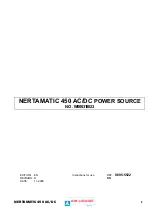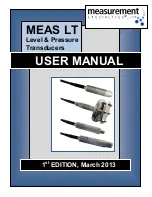
Two differential zones are overlapping across the bus-section or bus-coupler circuit
breaker. All faults in the overlapping zone will be instantly tripped by both zones
irrespective of the section/coupler circuit breaker status. However with modern busbar
protection it is possible to disconnect both CTs from the relevant zones when the bus-
section or bus-coupler circuit breaker is open. This will insure that if internal fault
happen, in the overlapping zone, while breaker is open, only the faulty zone will be
tripped while other busbar section will remain in service. However, due to low
probability of such fault happening, while the breaker is open, such special
considerations are typically not included in the busbar protection scheme for this type
of stations. In such applications, the bus section or bus coupler current transformers
shall be wired just to two separate current inputs of the IED. Meanwhile these currents
should be given to both related differential zones. To ensure this, in two-zone busbar
protections, it requires to set the corresponding bays the parameter
ZoneSel
to
FIXEDtoZA
in one bay and
FIXEDtoZB
in another bay in the parameter setting tool
(PST).
When live tank circuit breakers are used, often only one current transformer is
available in bus-section or bus-coupler bay. The suggested solution in such applications
is shown in Figure
.
ZA
2
1
8
ZB
2
1
8
Blind Zone
en01000014_ansi.vsd
ANSI01000014 V1 EN-US
Figure 47:
Example of station with just one main CT in the bus-section bay
For this type of solution just one main CT is located on only one side of the circuit
breaker. Thus, there is no zone overlapping across the section/coupler circuit breaker as
shown in Figure
. A blind spot exists between the current transformer and the circuit
breaker in the bus section or bus-coupler bay as shown in Figure
1MRK 505 370-UUS A
Section 6
Differential protection
Busbar protection REB670 2.2 ANSI
123
Application manual
Summary of Contents for RELION REB670
Page 1: ...RELION 670 SERIES Busbar protection REB670 Version 2 2 ANSI Application manual ...
Page 2: ......
Page 24: ...18 ...
Page 40: ...34 ...
Page 72: ...66 ...
Page 102: ...96 ...
Page 266: ...260 ...
Page 272: ...266 ...
Page 290: ...284 ...
Page 432: ...426 ...
Page 542: ...536 ...
Page 552: ...546 ...
Page 553: ...547 ...











































